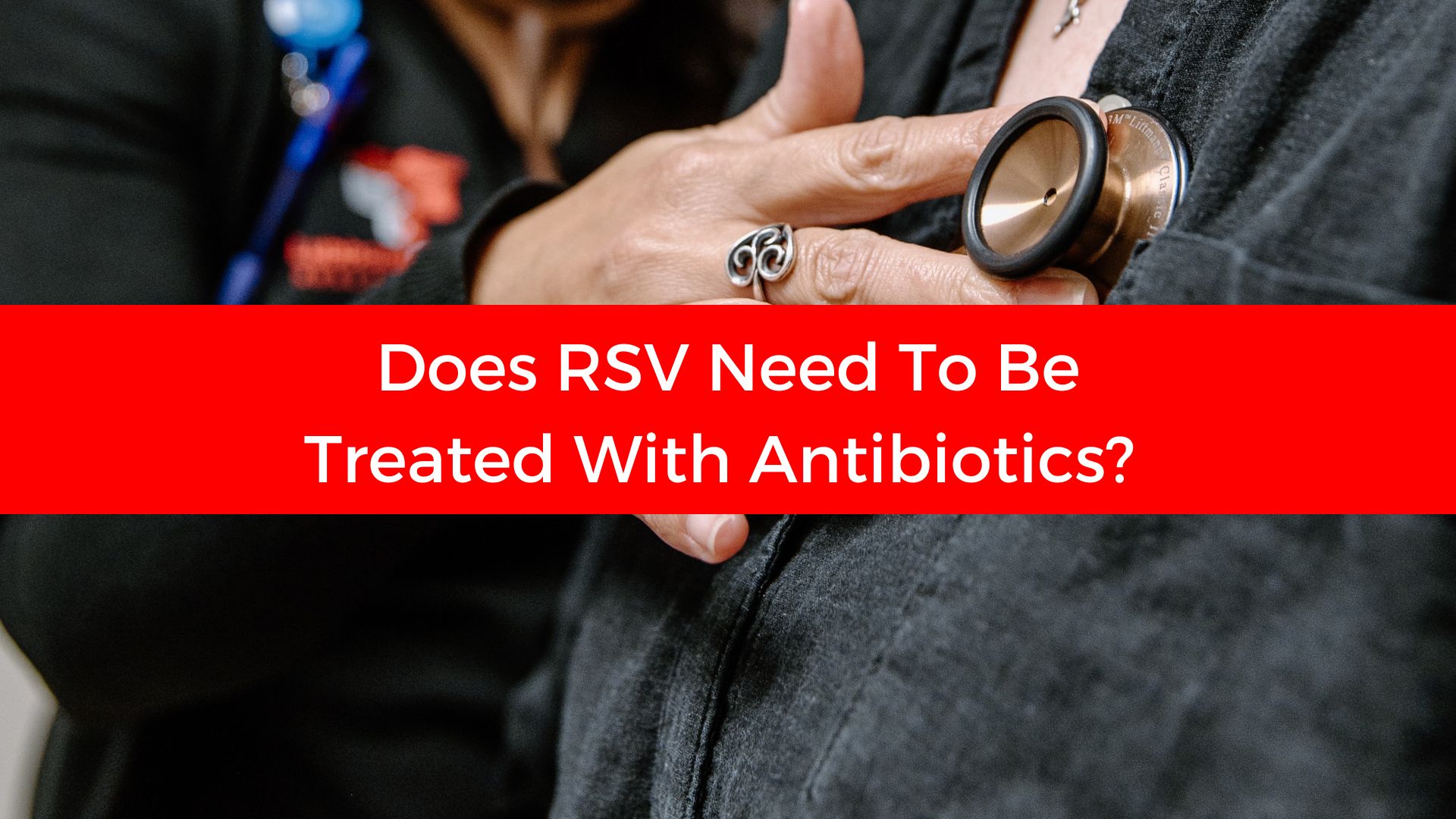Feeling under the weather? It might be RSV! RSV, or Respiratory Syncytial Virus, is a common respiratory infection that affects people of all ages, but can be particularly serious for infants, older adults, and those with weakened immune systems. While it often causes mild cold-like symptoms in healthy adults and older children, RSV can lead to more severe respiratory issues in vulnerable populations.
Understanding RSV
RSV primarily affects the lungs and respiratory tract. When the virus enters the body, it replicates in the nasopharynx and then binds to the bronchiolar epithelium, causing cell damage. This leads to increased mucus production and inflammation in the airways, which can result in breathing difficulties.
Symptoms typically appear 4-6 days after exposure and may include:
- Runny or stuffy nose
- Dry cough
- Low-grade fever
- Sore throat
- Sneezing
- Headache
Can RSV Be Treated With Antibiotics?
RSV does not need to be treated with antibiotics because it’s a viral infection. Therefore, antibiotics won’t help as they treat bacterial infections.
How to Treat RSV?
But here’s the good news: Most cases of RSV are mild and resolve on their own. The key is supportive care:
- Rest and Relax: Your body’s working overtime to fight off RSV. Give it the energy it needs by catching some extra Z’s. Binge-watch that series you’ve been meaning to see, or dive into a good book. Doctor’s orders!
- Hydration Station: Water, juice, warm soup – keep those fluids flowing! Staying hydrated helps thin out mucus and keeps your body running smoothly. Pro tip: ice pops can be soothing and hydrating!
- Nasal Drops: Arm yourself with saline drops to clear out congestion. It’s like a spa day for your nose!
- Humidity Hero: Run a cool-mist humidifier to make breathing easier. It’s like creating your own personal tropical paradise (minus the beach, unfortunately).
- Comfort is Key: For fever and discomfort, chat with your doctor about over-the-counter pain relievers. They’re like a warm hug for your body.
Remember, RSV usually runs its course in about a week or two. But keep an eye out for any red flags. If you notice difficulty breathing, blue-tinged skin, severe coughing, extreme lethargy, or high fever, it’s time to call in the cavalry (aka your healthcare provider).
Prevention is the Best Medicine
Here are some key things to do to prevent the spread of RSV.
- Practice good hygiene: Wash your hands frequently with soap and water for at least 20 seconds.
- Avoid close contact: Stay away from people who are sick, and if you’re ill, limit contact with others.
- Clean surfaces: Regularly disinfect frequently touched surfaces to prevent the spread of the virus.
- Don’t share personal items: Avoid sharing cups, eating utensils, or towels with others.
- Consider vaccination: For high-risk infants and adults, talk to your healthcare provider about available RSV vaccines or preventive antibody treatments.
When to Seek Medical Attention
While most RSV cases can be managed at home, it’s important to know when to seek medical help. Go to the hospital or contact your healthcare provider immediately if you or your child experience:
- Severe difficulty breathing or rapid breathing
- Bluish color to the skin, particularly on the lips and nail beds
- High fever that doesn’t respond to fever-reducing medication
- Severe cough that doesn’t improve or worsens
- Decreased activity or unusual lethargy, especially in infants
- Signs of dehydration, such as decreased urine output or dry mouth
Remember, RSV can be serious, but with proper care and attention, most people recover fully. Stay vigilant, practice good hygiene, and don’t hesitate to seek medical help if symptoms worsen. By taking these steps, you’re not only protecting yourself but also those around you who may be more vulnerable to severe RSV infections. Stay healthy and breathe easy!





 and then
and then